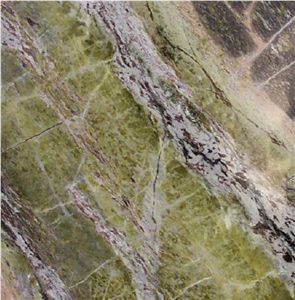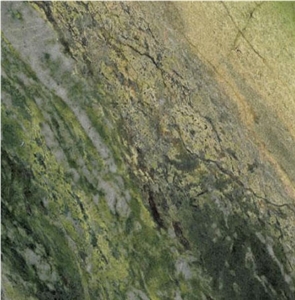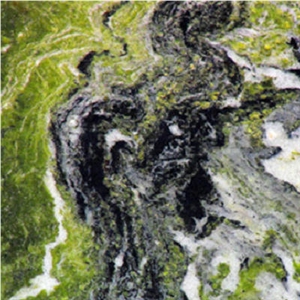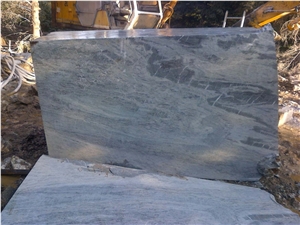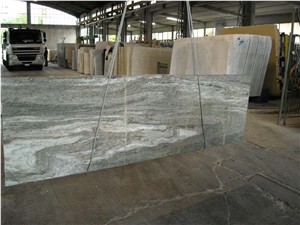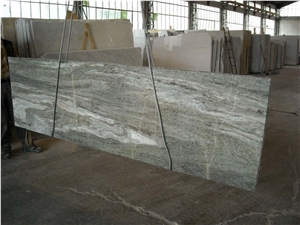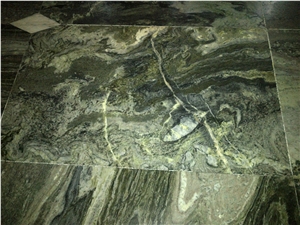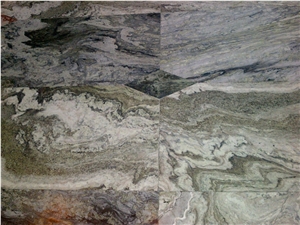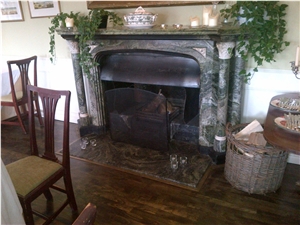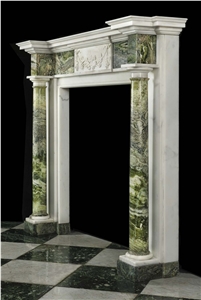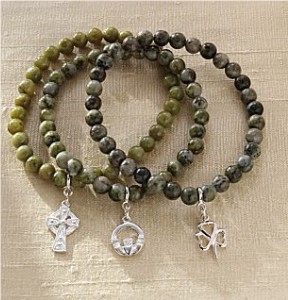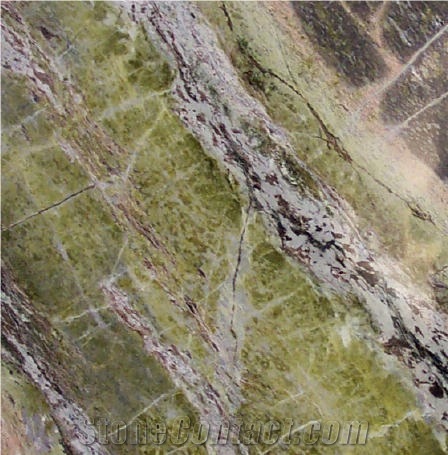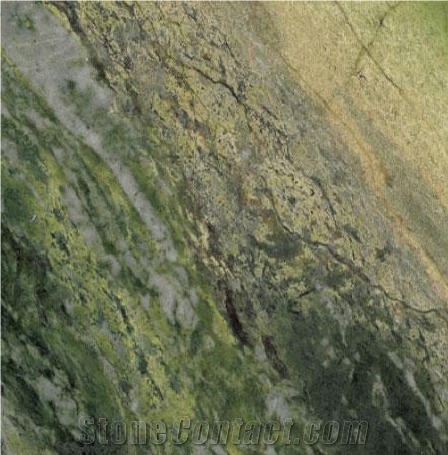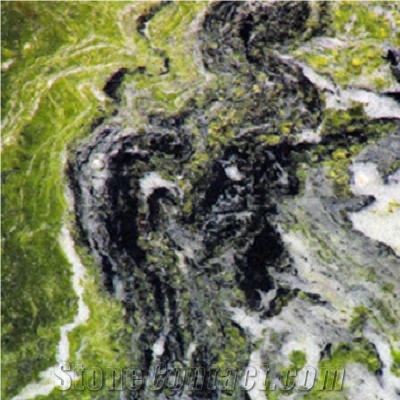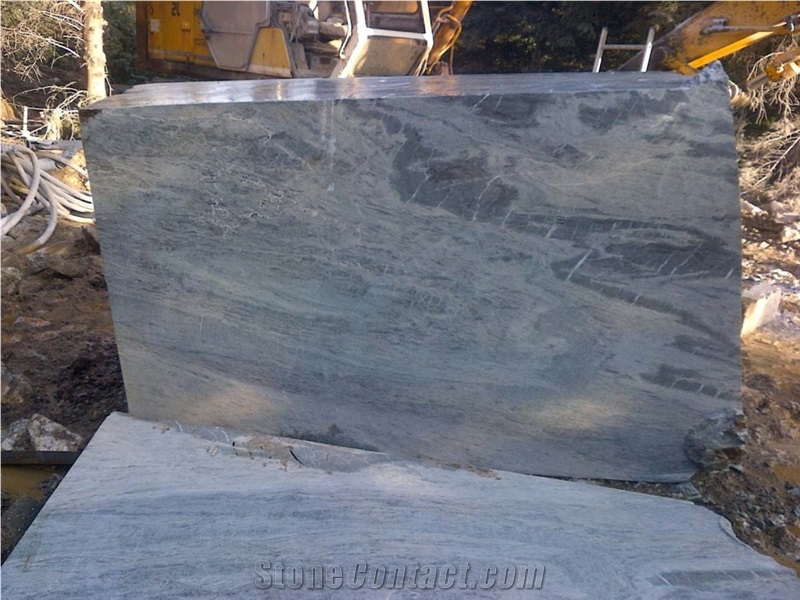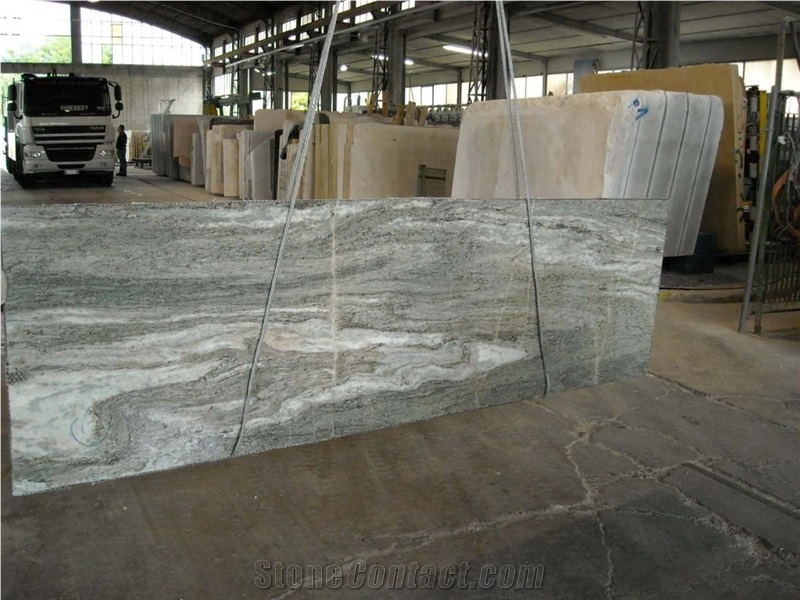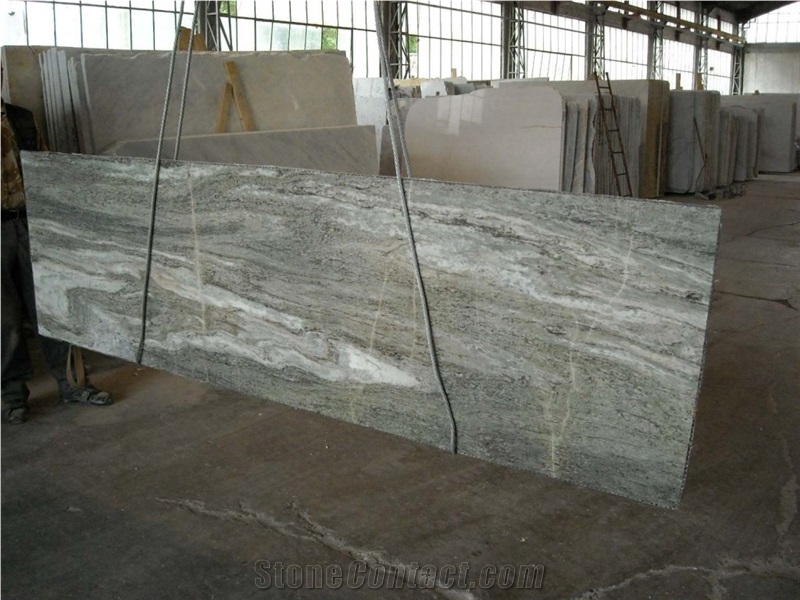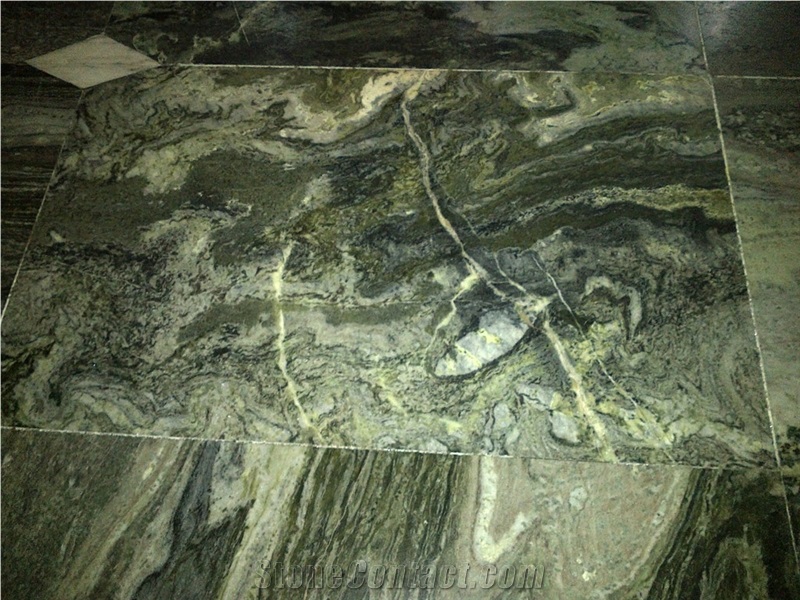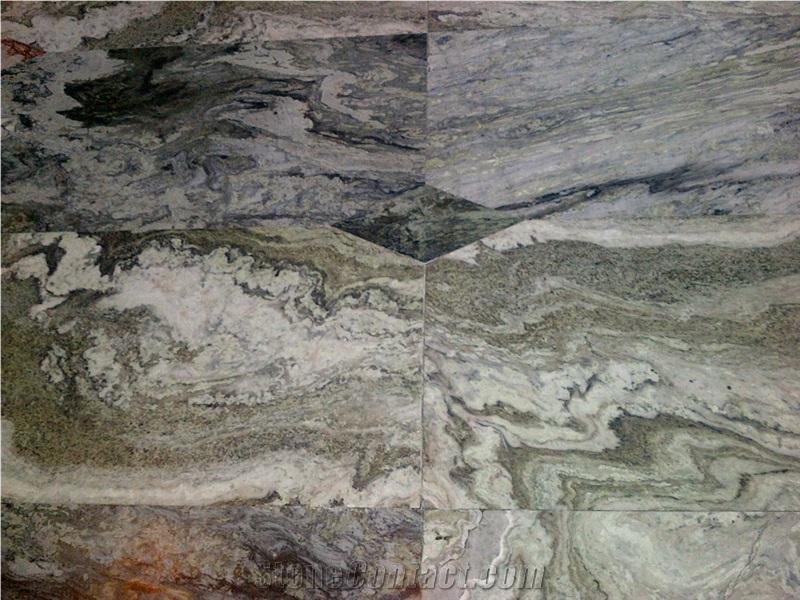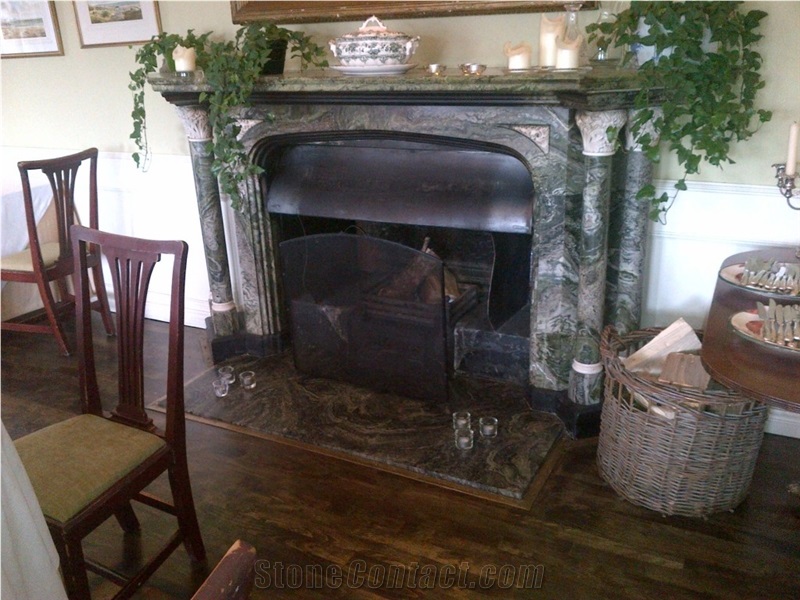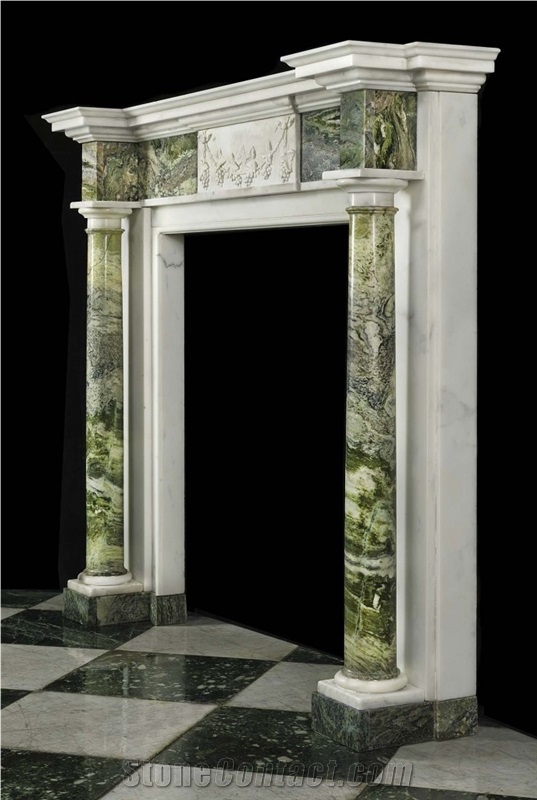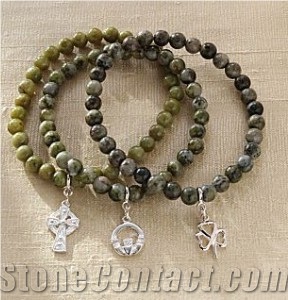Connemara Marble
 Ireland
(Derryclare, Lissoughter, Recess, Co. Galway , Connemara, west coast of Ireland)
Ireland
(Derryclare, Lissoughter, Recess, Co. Galway , Connemara, west coast of Ireland)
Connemara Marble is a unique and distinctive type of marble that is primarily found in the Connemara region of County Galway in Western Ireland. It is renowned for its rich green color, varying from light to dark shades, which is reminiscent of the lush landscapes and rolling hills of the region.
What sets Connemara Marble apart is its natural patterns and veining, which can range from subtle to more pronounced. These patterns often feature shades of gray, white, and even hints of gold or brown, adding depth and character to the stone. Each piece of Connemara Marble is unique, displaying its own intricate and captivating variations.
In addition to its striking appearance, Connemara Marble holds historical and cultural significance in Ireland. It has been used for centuries in traditional Irish craftsmanship, such as jewelry, sculptures, and decorative objects. The stone is often associated with Irish heritage and is considered a symbol of Ireland's natural beauty.
Connemara Marble is not only admired for its aesthetic appeal but also for its durability and strength. It is a dense and hard stone, making it suitable for a variety of applications. It can be used for countertops, flooring, fireplace surrounds, and other architectural and decorative purposes, both indoors and outdoors.
To maintain the beauty of Connemara Marble, regular cleaning with a mild soap and water solution is recommended. It is important to avoid harsh chemicals or abrasive cleaners that can damage the surface. Polishing the marble occasionally can restore its luster and enhance its natural beauty.
In summary, Connemara Marble is a distinctive and cherished stone from Ireland, known for its rich green color, unique patterns, and cultural significance. Its use in various applications allows it to bring a touch of Irish heritage and natural beauty to any space.

Is Connemara Marble only found in Ireland?

Why is Connemara Marble special?

Can Ireland's Connemara Marble be used in a living room?

Are there color variations of Ireland's Connemara Marble?

What is the coefficient of friction of Filled Ireland's Connemara Marble tiles?

Does vinegar clean Connemara Marble?

Is Ireland's Connemara Marble an expensive stone?

How thick is Ireland's Connemara Marble slabs?

Can Ireland's Connemara Marble be used in wall coverings?

Why is Connemara Marble green?

Is Connemara Marble still quarried?

What grade is Ireland's Connemara Marble?

How hard is Connemara Marble?

What is special about Connemara Marble?

How can I clean Connemara Marble jewelry?

Can Ireland's Connemara Marble be used exterior applications in very sunny climates?

Who owns Connemara Marble quarry?

Can Ireland's Connemara Marble be used indoors?
 Mr ****
Reviewed in United Kingdom on May 03,2023
Mr ****
Reviewed in United Kingdom on May 03,2023
What price; Connemara Headstone. size approx; 3'-6" inches high x 2'-6" wide.
 Nik****
Reviewed in United States on Jan 05,2023
Nik****
Reviewed in United States on Jan 05,2023
do you have that is stock in usa?
-

Xiamen Asian Stone Imp.& Exp. Co.,Ltd.
 China
China
 13YRDiamond members are premium members on platform, providing members with comprehensive approach to promoting their products, increasing products exposure and investment return to maximize.
13YRDiamond members are premium members on platform, providing members with comprehensive approach to promoting their products, increasing products exposure and investment return to maximize.
 Verified Supplier is for prove company authenticity,including business license,trade license and effective office space,to enhance buyers' trust to suppliers and their products, reducing communication costs.
Verified Supplier is for prove company authenticity,including business license,trade license and effective office space,to enhance buyers' trust to suppliers and their products, reducing communication costs.
Contact Supplier
-

XIAMEN TOP STARS STONE COMPANY LIMITED
 China
China
 10YRDiamond members are premium members on platform, providing members with comprehensive approach to promoting their products, increasing products exposure and investment return to maximize.
10YRDiamond members are premium members on platform, providing members with comprehensive approach to promoting their products, increasing products exposure and investment return to maximize.
 Verified Supplier is for prove company authenticity,including business license,trade license and effective office space,to enhance buyers' trust to suppliers and their products, reducing communication costs.
Verified Supplier is for prove company authenticity,including business license,trade license and effective office space,to enhance buyers' trust to suppliers and their products, reducing communication costs.
Contact Supplier
-

Xiamen Dingjun Trading CO., LTD
 China
China
 6YRDiamond members are premium members on platform, providing members with comprehensive approach to promoting their products, increasing products exposure and investment return to maximize.
6YRDiamond members are premium members on platform, providing members with comprehensive approach to promoting their products, increasing products exposure and investment return to maximize.
 Verified Supplier is for prove company authenticity,including business license,trade license and effective office space,to enhance buyers' trust to suppliers and their products, reducing communication costs.
Verified Supplier is for prove company authenticity,including business license,trade license and effective office space,to enhance buyers' trust to suppliers and their products, reducing communication costs.
Contact Supplier
-

 Ireland
Ireland
Contact Supplier
-

-

XIAMEN TOP STARS STONE COMPANY LIMITED
 China
China
 10YRDiamond members are premium members on platform, providing members with comprehensive approach to promoting their products, increasing products exposure and investment return to maximize.
10YRDiamond members are premium members on platform, providing members with comprehensive approach to promoting their products, increasing products exposure and investment return to maximize.
 Verified Supplier is for prove company authenticity,including business license,trade license and effective office space,to enhance buyers' trust to suppliers and their products, reducing communication costs.
Verified Supplier is for prove company authenticity,including business license,trade license and effective office space,to enhance buyers' trust to suppliers and their products, reducing communication costs.
Contact Supplier
-

 Ireland
Ireland
Contact Supplier
-

-

 China
China
 Verified Supplier is for prove company authenticity,including business license,trade license and effective office space,to enhance buyers' trust to suppliers and their products, reducing communication costs.
Verified Supplier is for prove company authenticity,including business license,trade license and effective office space,to enhance buyers' trust to suppliers and their products, reducing communication costs.
Contact Supplier
-

Fujian Province Ruifengyuan Industrial Co., Ltd.
 China
China
 Verified Supplier is for prove company authenticity,including business license,trade license and effective office space,to enhance buyers' trust to suppliers and their products, reducing communication costs.
Verified Supplier is for prove company authenticity,including business license,trade license and effective office space,to enhance buyers' trust to suppliers and their products, reducing communication costs.
Contact Supplier
The request includes: 1. surface finished, size 2. quantity required
 Han***Wrote:
Han***Wrote:
Hello, I want to buy Connemara Marble (attached). I would like to see a sample hoping to use it on a bespoke vanity.
 Ann***Wrote:
Ann***Wrote:
Hello, I want to buy Connemara Marble tiles (attached). I want a 3x4 foot square of Connemara marble at 1.5 inches thick. Ship to Lexington Kentucky. Can you do that?
 Mit***Wrote:
Mit***Wrote:
I want to buy Connemara Marble slabs.
 Had***Wrote:
Had***Wrote:
I want to buy Connemara Marble slabs.
 Mar***Wrote:
Mar***Wrote:
I want to buy Connemara Marble for countertops-likely 4-5 slabs






